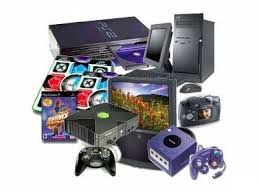Are video games really art? It is a question that has been volleyed back and forth by gamers and critics alike. Does sophisticated programming language determine quality? Or is it the complexity of story and visual appeal? Though they have been around for years, there remain many unanswered questions about how to relate games to art.

Video Games in the Museum
Video games made a statement last year with their own exhibit at New York City’s Museum of Modern Art (MoMA). For game enthusiasts, it was a triumph to see Pac-Man, Tetris and the Sims in the same building that houses famous works by Vincent Van Gogh and Claude Monet. The museum classified the display as a part of Applied Design Installation, consulting scholars, digital experts, historians and critics to determine aesthetic quality.
To Be, Or Not To Be
But games haven’t always been so celebrated. Film critic Roger Ebert famously denounced games as ever becoming art a few years back. The critic stayed true to his defense saying that art communicates the artist’s ideas, while games are impossible to define because the player’s interaction with them keeps the “art form” fluid. Thus, the statement the game makes will always be changing.
But perhaps this is a way in which games actually go a step further in interpretation. The viewer always brings something to a piece of art. This shapes the way the piece is perceived. But with games, the viewer is also a player, actively participating in determining the outcome and the statement.
Do We Even Know What Art Really Is?
When attempting to treat games critically, the argument eventually boils down to a loaded question: what is art? The innate subjectivity combined with the myriad of mediums being invented everyday make it nearly impossible to define.
And since there is no clear explanation, then we can’t really count games out, argue enthusiasts. “Are games art or aren’t they?” asks Guardian critic Jonathan Jones. “Nobody need answer. Games are beautiful and important, we can leave it there and know that we are right.”
Censorship and Politics
If there is one thing we do know, it is that games are not treated like other media such as books music and video when it comes to release and distribution. Application designers have to keep this in mind when submitting game applications to stores like the App Store.
“Curation” is the term Apple uses for reviewing and rating games submitted to its store. “We view apps differently than books or songs, which we do not curate,” the company explains in its guidelines for game developers. “If you want to criticize a religion, write a book. If you want to describe sex, write a book or a song or create a medical app. It can get complicated, but we have decided to not allow certain kinds of content in the App Store.” As a result, many apps may not pass review because of explicit or questionable content. Others might receive a rating such as 12+ or 17+. And this may prove problematic for distribution as countries like as Brazil and South Korea restrict anything rated as 17+. Thus developers lose access to these important markets.
Conclusion
When it comes to video, mobile and online gaming technology has once again surpassed our ability to develop an ethical code or a philosophical understanding. Perhaps in the future, critics, developers and artists will be able to agree on how to games as art or otherwise.
Author Bio:
Tina Hamilton is a journalist, blogger and social media guru. You can usually find her online or walking along one of Southern California’s beaches with her dog, Joey. You can find her on Twitter.